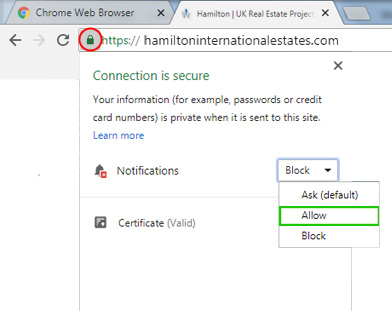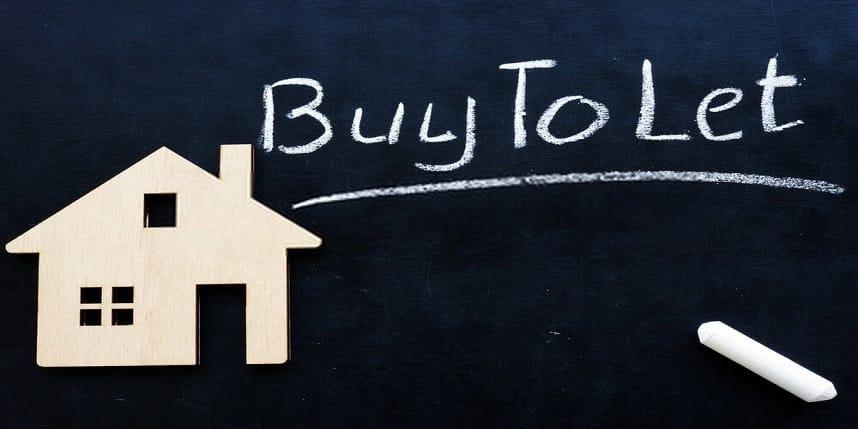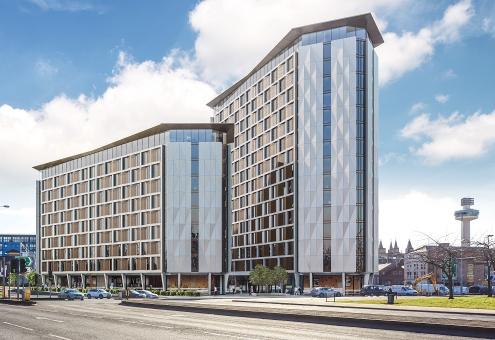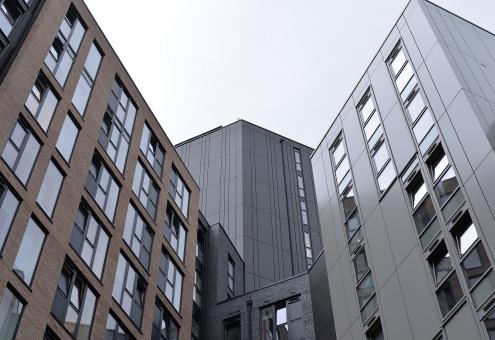Buy To Let Stamp Duty
02 Jun 2020
In 2016, the UK government introduced a surcharge on second homes, intending to impose stricter tests and reduce high tax relief on mortgages’ interest payments. The implementation staggered over 4 years, and the last stage of the withdrawal of the higher rate tax relief was on April 6 amidst the COVID crisis and buy to let stamp duty.
The last 10 years have been difficult for the housing market with unstable political stands and the global financial crisis that led to numerous regulatory and policy changes.
After the introduction of the recent stamp duty change, the market remained resilient as per the government figures that show at the end of 2010, there were 1.3 mn buy to let mortgages (of total value £151 bn), and in 10 years, the number of lending increased to almost 2 mn (assessment value £260 billion). The figure does not mention the exact idea of the new purchases and the remortgages.
Just before the coronavirus outbreak, the buy to let mortgages increased to one of the highest levels since October 2007 but the market has been impacted by the recent events and almost reduced half of the total value and it is difficult to predict when it will pick up again.
What is Stamp Duty?
-
Stamp duty is the tax that is paid by the residential property buyer – freehold or leasehold, new or existing, shared (or joint), or single ownership in England and Northern Ireland that is paid in 30 days of buying a home.
-
In most cases, it is paid at the time of the transfer of money to the solicitor, who makes the payment on the day of completion of the purchase. It is also paid in case you are moving houses.
-
Even for non-residential properties, the nil rates do not apply if the rental figure is more than £1,000 per annum.
-
The same duty law does not apply in Scotland and Wales; instead, it has its own set of tax rules that is applicable.
-
The first time buyer buy to let stamp duty is different from the primary home. HMRC looks for the main residence of the buyer, the place from where the children go to schools, and the address from where you are registered to vote or the place where the family spends most of their living time.
Stamp Duty on Buy to Let Property
In November 2015 autumn statement, the chancellor George Osborne informed about the introduction of a new stamp duty calculator secondhomese where the changes increased the taxes on properties worth £275k from £3,750 to £12,000.
Earlier the landlords could deduct the mortgage interest and other costs from the housing income before calculating the taxes but with the introduction of new changes, the landlords faced restricted tax relief and the changes were phased in 4 years starting from April 2017 was expected to end in April 2020.
New PRA underwriting standards were launched in January 2017, where the landlords had to comply with stricter interest coverage and stress test for the new mortgages and the lenders who earlier focused only on the rental income and value of the property, had to submit all the information related to existing rental properties, liabilities income and costs.
Phase II of the new regulations started in September 2017 that required the lender to validate all properties, especially; the owners who had more than 3 buy to let property. They needed to provide information related to property value, costs, mortgages, and rental income.
Stamp Duty Calculator Rules
-
Those who want to rent their primary dwelling, and move out to the new main residence are liable to pay higher duties.
-
There are conditions where the owners who wish to move accommodations are not liable to pay the higher rate because there is no retrospective tax on existing property and the owner who traded their main residence for another one is given - 36 month time to buy a new home without paying the higher duties. (The grace time was increased from 18 to 36 months for difficult situations.)
-
Those who want to move but are not selling the main residence will have to pay it because they will own two properties at the end of the transaction but if they sell the previously held dwelling in 36 months, they can claim for refund.
-
In the case of the married couple – the civil partnership is considered to be a single entity but those who are separated due to various circumstances and are living separated permanently, are considered individual entities for calculating the stamp duty liabilities.
-
In case of joint ownership, unmarried joint purchasers can enter a transaction where the procurement of additional property is liable to higher rates, where the purchasers are considered to be a single entity like married couples or civil partners.
-
Along with this, the overseas homes bought in other parts of the world which include the furnished holiday inns and second homes – are taxed as per the same rule.
Buy To Let Stamp Duty Avoidance
SDLT is not paid for commercial properties worth up to £150,000 and residential properties up to £125,000.
There are certain ways that can be adopted for buy to let stamp duty avoidance like -
-
Proving the property that you bought and renovated was uninhabitable at the time of purchase. It can help to contest against the stamp duty where the owner of the property has to submit the surveyor’s reports, details of the renovations (the related invoices and bills), and selling agent’s advertisements or auction house brochure to prove the claim.
-
One can buy property under £40,000, and in such cases, the surcharge will not apply.
-
Additional properties like mobile homes, houseboats, or caravans are exempt, and also the homes inherited do not lead to additional tariffs.
-
Lands/plots are also exempt if is not considered residential.
-
One can buy the commercial property where the surcharge does not apply.
-
It can be difficult for the new investors but mixed-use properties like shop and flat can offer a variety of alternative tax reliefs.
Stamp Duty Calculator Buy to Let
The new regulations have led to tougher criteria for a mortgage where the amount of rent from buy to let properties must be higher in proportion to cover the mortgage cost than before. The basic thumb rule is that one should cover in the range of 125% to 145% each month.
The stress rate is the interest that measures borrowing affordability that can increase by 5.5% in certain cases. The rule has become difficult for the portfolio landlords who need to apply for remortgage and get an accounting of all types of investments on the property to get an accurate idea of the investment and earnings.
The rental cover is expected to be lower for those who have a mortgage for longer-term and those borrowing less as compared to the property value. Those borrowings 35% of the value will get the stress-test as 4.99 percent and those with higher get it 5.5 percent.
Since April 2019 the tax relief was phased out and the government is eliminating the ability of the owner to deduct mortgage interest from rents before getting the tax amount. The perk scrapped is 25 percent each year and in 2020, this will be completely removed and replaced with a 20% credit.
Stamp Duty on Buy to Let Property
The basic tax will be affected by the new rules as the new regulations of 20% tax credit applies to all, that costs neutral value. Those in higher tax brackets will bring a 20% basic rate and several landlords are remortgaging to get lower tariffs.
Some are shifting the debt from the main home to second to get a better rate and enhance profitability. One can claim a refund if they sell the main resident in three years and claim a refund in 3 months of the sale of the main residence or within 12 months of filing the date of the SDLT tax return.
But one should try to get enough income and deposit and seek the help of a tax advisor to get the best ways to invest. The SDLT charges will apply to firms, existing and newly formed companies, where the property purchased in England, Northern Ireland, and Wales are considered additional.
Some property owners may consider moving the portfolio into a company structure which requires selling the home and re-buying inside a company, which may result in capital gains tax and stamp duty bills. Investing through a limited company increases the initial set up cost and one will need to file an annual return that requires an accountant. Further, companies need to pay corporation taxes and dividend taxes.
The First-Time Buyer Buy to Let Stamp Duty
-
Those who are first time buyer in England or Northern Ireland will pay no duty on properties valued up to £300,000, which means, the first time buyer gets the opportunity to save up to £5,000.
-
Even in joint ownership, if one of the partners is the first-time buyer, some relief can be given, in the case of unmarried people. However, if the mortgage is on one name and is based on one person’s income, then it will affect the lending and in case of joint ownership, if the property is in both names, they should know the share of their claims legally to get any benefit.
-
For first time buyer, if the parents want to help children get a new home, they are expected to pay higher stamp duty but in case, they take the joint mortgage with children, where the parents’ name is mentioned on the deeds, it makes them liable to pay for the duties as it legally means they are co-owner / owner of the home bought for the children. But in case the parents only give the funds as deposits or serves as guarantors, the rates do not apply.
How Much Stamp Duty on Buy to Let Property?
Due to strict regulatory changes, the buyers have been turned to get mortgages through specialist lenders who get an assessment of larger portfolios and this makes it difficult for mainstream lenders to compete successfully. The changes in tax rules have created confusion with buyers who are not sure of the most effective ways to handle the new changes.
Before 2015, less than 5% of landlords used special purpose vehicles to structure their property holdings but after the introduction of the new rule 63% of the landlords are planning to conduct the purchasing through a limited company (Q3 2019 - research from BVA BRDC).
The growing tax and regulatory burden led many amateur landlords to hold just one to two properties and the most dominant holders in the market are limited companies or professionals with large portfolios. Some believe this will increase if those who had a bad experience renting out may not invest more in new properties.
Despite the difficult property market situation, buyers find long term opportunities and benefits in getting a bargain in the current market. Currently, the market offers a great time to make a decision and the competition is less.
The buyers are expected to get more options and a variety of less risky deals to buy. Further, the low-interest rates offer comfort and enough equity to select from across the market.
The buy to let stamp duty increase applicable to new transactions include -
-
Stamp duty tax liability for anyone buying a property in the UK, which has increased from April 2016, which mean the new buyers need to pay 3% more in taxes. The lower threshold is at £40,000 which means almost all the buy to let deals will be subjected to SDLT.
-
For properties below £40,000, lower rates are applicable but for those above the range up to £145,000, single property 0%, and more than 2 properties 3% is applied.
-
Similarly, for a higher price, in the range up to> £250,000, rates vary from 2 - 5%.
For the range from £250,000 to £250,000, 5 to 8% is applicable, and for higher rates - 10% to 15%.
Stamp duty calculator second home
One can calculate the buy to let stamp duty increase by examining the following –
-
Type of property – commercial, residential, jointly / co-owned or leased
-
Location / ownership conditions (auctions) through any disadvantaged / relief area
-
The amount premium paid (or not)
-
Rental earnings and Term of the lease (and the highest annual rent in the last 5 years)
-
If the average annual rent is greater than £600
Historical data finds the decline in earnings can hit rental growth. Recently, other reports indicate uncertainty over household incomes and their impact on tenants’ incomes which has been over-stretched.
The landlords have no option to accept rents reduction up to 50% due to the inability of the tenant to pay high rents due to job cuts and lower earnings in the lockdown months.
Landlords claim they need to be fair to allow people to get back on their feet to ensure future earnings. Since the lockdown, the activities in the market have diverged from residential sales, and now the government has imposed restrictions on such transactions.
People are looking for short term flexibility in the rental market, and there have been short term spurge in the market during the partial relaxation of demand but the economic issues and related hesitancy where the overall picture is not clear till the restrictions are further eased has restricted growth.
In the post-COVID phase, the buyers are rethinking the plan of home buying where the charges remain uncertain and several buyers have been challenged by mortgage lenders’ recent restrictions related to the high loan to value mortgages on smaller deposits.
At present, the property owners must pay 3% of the surcharge but RICS, recently, called for a stamp duty holiday across the market where it is preparing to scrap some taxes to bring buyers back to the market and revive the housing market by supporting long term buying and private renting.
Categorised in: All News












